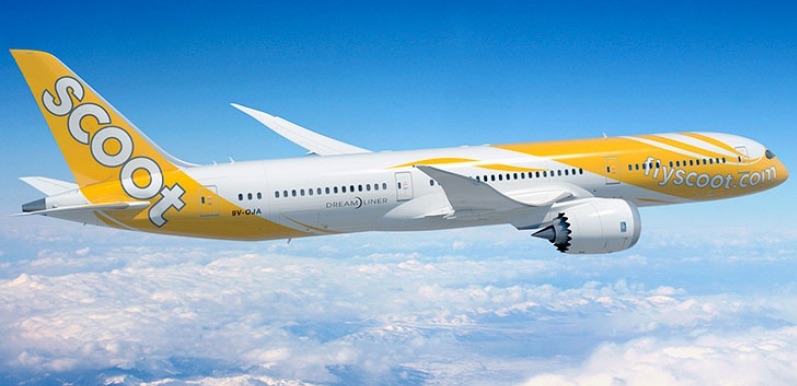Is there a place at the alliance table for low-cost-carriers? With no-frills, budget carriers burgeoning, that is a question legacy alliances must grapple with.
Star Alliance CEO Jeffrey Goh was interviewed by Bloomberg at the Singapore Airshow this week. The full interview is below and touches on many interesting points, but of interest to me was discussion on the growing prevalence of low-cost carriers.
When asked if Star Alliance was open to more members, Goh demurred, though he did not foreclose the possibility. Instead, he suggested a partnership.
Many of our members and many airlines around the world are moving a lot to lower-cost platforms. We want to find a way of recapturing these markets offering the benefits and privileges that they used to have and enjoy. We want to use this connecting partner model.
Let’s examine the current state of affairs. Lufthansa has Eurowings, a low-cost division outside of Star Alliance. Thai Airways has Thai Smiles, also outside the alliance. Singapore Airlines has Scoot, which operates outside the alliance. ANA has Vanilla Air, Asiana has Air Seoul, and South African has Mango.
All of these carriers are in the “low-cost” model and serve markets or destinations that were neither practical nor profitable for their parent legacy carriers.
But with limited exceptions, these subsidiaries of Star Alliance carriers offer very little to Star Alliance itself or to customers who are loyal to Star Alliance. Star Alliance Gold benefits like lounge access or complimentary checked bags do not apply to these subsidiaries. These flights also do not show up in award searches…they are separate, non-Alliance carriers.
This, however, creates holes in the network and undermines the concept of worldwide connectivity across the Star Alliance network. Yet making these low-cost carriers full-fledged Star Alliance members seems like a remarkable way to cheapen the brand and introduce unnecessary complications to a low-cost model.
A Middle Road = Connecting Partners
Is there a way to have the best of both worlds? To integrate these carriers into the alliance so that passengers who fly on these low-cost subsidiaries will still enjoy certain benefits?
Take lounge access for instance. In many cases this would not be applicable because budget carriers operate out of low-cost terminals…without lounges. But in cases where lounges are available, would it destroy the low-cost model to grant access? Would this encourage more business?
What about inter-line baggage issues? Budget carriers pride themselves in refusing to check bags through, but let’s say you’re at a resort in Phuket and need to fly Thai Smiles to Bangkok and then connect on Singapore Airlines to Singapore. Would checking bags though engender loyalty to the Alliance and therefore loyalty to the Member Carriers?
Finally, what about earning miles? Does a budget carrier cease to be a budget carrier when you can earn frequent flyer miles on another Star Alliance carrier? Wouldn’t that strengthen the route map and ultimately help the Member Carrier?
I’m asking questions because the answers are not clear. I am not entirely clear what Goh is after: do budget carriers balkanize legacy carriers or can they work in concert to create a larger global network in which some markets simply will offer scaled back service? I tend to think the latter is true. Let’s face it: people are willing to give up a lot of comfort to save money. But integrating these budget carriers into the Alliance on a partnership basis may at least encourage customers to stick to Alliance-owned airlines and provide a more elevated flight experience for loyal Star Alliance travelers.
Star Alliance is attempting this through its “Connecting Partners” program. Only one airline, Juneyao Airlines, currently participates. If you fly on Juneyo as a Star Alliance Gold Member, you will receive:
- Priority Check-in
- Additional Baggage
- Priority Boarding
- Fast Track Security
- Priority Standby
- Lounge Access
- Priority Baggage Delivery
This represents a great start to addressing the growing waive of low-cost carriers.
CONCLUSION
I think low-cost-carriers are here to stay and the alliance that figures out how to work them into the business model is going to be the alliance that remains relevant the longest. The key is not to offer consistent service across airlines, but to manage expectations while still offering a baseline of perks like through-check-in, interline baggage, and mileage earning that would keep customers loyal to the full-service members of the alliance.
Do you think LCCs should play a great role in the Alliance?





Scoot is in Value Alliance
Which I don’t consider in the same league or tier as Star Alliance / SkyTeam / oneworld.
Start Alliance has a model called “Connecting Partners” for a “regional airline or an airline operating a low-cost model”. Juneyao was the first to join as a Connecting Partner.
Thanks. I’ve tried to make this clearer in my post.
His “focus is on the customers”? He might even believe it but the experience of those customers is becoming increasingly frustrating. Star Alliance used to lead the pack; these days Oneworld is so far in front in respect of benefits that it’s not funny ( QR/AA issues notwithstanding)…even SkyTeam delivers better on a ‘seamless’ experience than Star.
The infighting between members is getting worse , the lack of clarity about issues such as baggage allowance is lamentable, the round the world fare he mentions is a sick joke , his own website is nothing but slick PR spin and doesn’t have even one contact point for enquiries but rather refers back to individual airlines.
When did Star last survey their customers/passengers? Never.
This guy may ‘talk the talk’ but the fact remains that he presides over an organisation that could be used as a case study in missed opportunities and poor management….and one rapidly becoming a major CF.
My Star gold plus a Eurowings ticket gets me into Senator lounges. That’s a start.
LCCs, especially in Europe, serve the role of connecting passengers to the final destination, especially when it is not practical for a legacy carrier to run regular intercontinental service from smaller airports (e.g. Hamburg). Goh should consider that.
That’s not your Star Gold, but your United Star Gold…it’s a special bilateral relationship.
I would assume that Lufthansa’s Eurowings group would become a “Connecting Partner” as well…?
I am hopeful.
Bear in mind that Silkair not evenin Star Alliance system
I would find huge value in standardized expectations and benefits across the low cost offerings of Star Alliance members. Sometimes it is to places I need to go where the full member no longer flies.
Of course I would also like to have my ability to bring a carry on standardized so that I don’t face a situation like I recently experienced where i did not know until i checked in that i was “Eco Light” on Lufthansa. Just let me bring my carry on!
it makes sense to bring them into the “Connecting Partner” fold. Say if I’m connecting to some oddball destination from SIN that’s only served by LCCs ….. and if Scoot offers absolutely nothing unique, I’ll simply shop on price and very possibly patronize jetStar and the others.
But if Scoot (hypothetically) willing to interline tickets, interline bags, and not gouge me the king’s ransom for the checked bags, then i’ll have a better incentive to go for Scoot, even at a slight price premium.
I’m not asking for priority this, priority that, and lounge access everywhere, but a simple inter-line ticketing + bags and waiving bags fees if the Connecting Partner is the first leg of the itinerary can definitely go a long way.
@Paolo : ya nothing says oneworld leading the pack quite like Sri Lankan, Malaysian, S7 …..
What if, it doesn’t make sense, and to make it make sense, Star Alliance Connecting Partners SHOULD, in fact, be LCCs or regional carriers of airline groups in Oneworld and SkyTeam?
Think about it.
If Scoot joined Star Alliance Connecting Partner, whose network is more valuable than Singapore Airlines network itself, what’s to stop Star Alliance from cutting the middle man that is Toyland Airways
What if, it doesn’t make sense, and to make it make sense, Star Alliance Connecting Partners SHOULD, in fact, be LCCs or regional carriers of airline groups in Oneworld and SkyTeam?
Think about it.
If Scoot joined Star Alliance Connecting Partner, whose network is more valuable than Singapore Airlines network itself, what’s to stop Star Alliance from cutting the middle man that is Singapore Airlines?